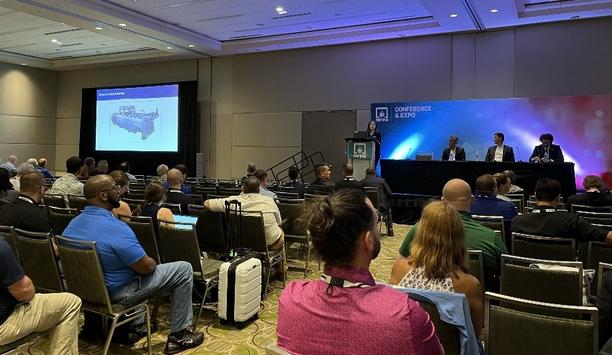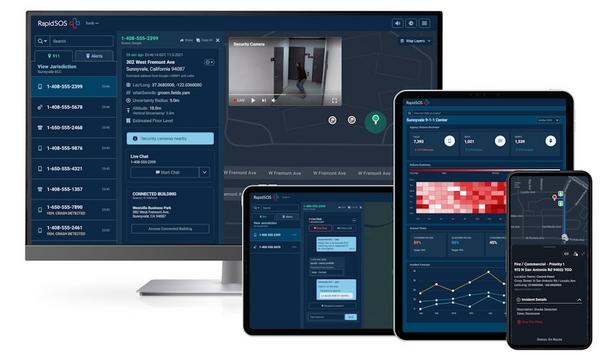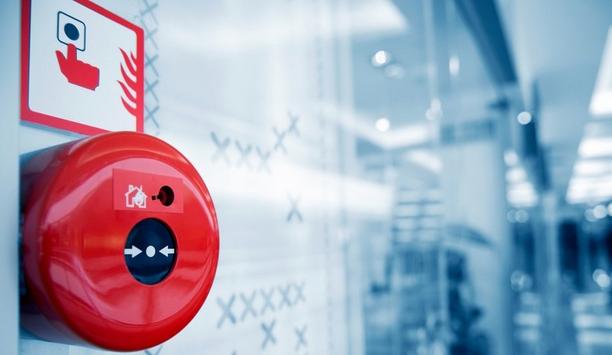A wealth of data is used to track the course of wildfires and guide an effective firefighting response. Computers crunch the data using software and a computing infrastructure to yield information in the form of wildfire modeling and better situational awareness to guide fire service response.
On the front line of turning data into useful information to advance fire science is the WIFIRE Lab at the University of California San Diego. The WIFIRE lab grew out of a project funded by the National Science Foundation (NSF). With a primary goal of enhancing fire science, the lab also impacts operational fire response, increasingly in real time.
Complex natural disasters
“Wildfires are complex natural disasters that are caused by many changing systems like weather and landscape,” says Ilkay Altintas, Ph.D., WIFIRE Founder and Director. “Ongoing observations using modern technology and analysis of changes using artificial intelligence are helpful to augment fire science and response efforts.”
The mission of the WIFIRE Lab is to provide a collaborative and transparent framework to bridge data, artificial intelligence and computing with fire science and its application to practice. “We are envisioning this framework to extend to the modeling and management of disasters beyond fires in the long term, such as floods and smoke plumes," adds Altintas.
 |
| The mission of the WIFIRE Lab is to provide a collaborative and transparent framework to bridge data, artificial intelligence and computing with fire science and its application to practice |
Detecting smoke patterns
WIFIRE Labs analyzes climate data such as wind speeds and direction provided by utility company weather stations
Much of the work at WIFIRE involves automating processes and creating workflows ‘behind the scenes’ to crunch a variety of data, sometimes using supercomputers, machine learning and artificial intelligence (AI). The resulting ‘data assimilation’ provides valuable tools to advance the science of fire and to facilitate the work of firefighters. Among the goals is to provide ever-faster and more accurate intelligence, even for rapidly moving fires that have previously defied real-time computer analysis.
WIFIRE Labs analyzes climate data such as wind speeds and direction provided by utility company weather stations, the National Weather Service, and the U.S. Forest service. Conditions such as moisture levels help to predict the course of a fire. Satellite imagery can detect smoke patterns, the hottest areas of fires, which areas are still burning and how they will likely continue to expand.
Multiple weather forecasts
Guiding WIFIRE Labs’ research is close collaboration with fire departments, including the Los Angeles and Orange County Fire Departments. They provide “Regular feedback about what they want out of the interface,” says Jessica Block, WIFIRE Associate Director for Operational Programs. “It is a direct product of close collaboration with firefighters.”
“Being able to monitor our environment requires putting all the data together,” says Block. “Understanding how fires are behaving and changing the environment is important and available to the entire fire community.” A data portal and public interface is called FIREMAP. Fire agencies can request accounts and use the system to run predictive models to help with firefighting. For example, they can project the possible course of a fire based on multiple weather forecasts.
 |
| Understanding how fires are behaving and changing the environment is important and available to the entire fire community |
Active fire perimeters
The community knows there is a need for additional models to serve the need"
FIREMAP is a decision-support and information tool that analyzes and visualizes data and makes it available to decision makers in a format that informs and assists them before, during and after a wildfire event. The map interface can show a variety of information such as active fire perimeters, weather conditions, wind direction, satellite images, local video camera views, surface fuels, etc.
The currently used fire model is called FARSITE, but it was not designed for rapidly moving fires. “The community knows there is a need for additional models to serve the need,” says Block. For example, how are fire models different for fires fueled by surface grasses and shrubs versus those fueled in a conifer forest environment?
Fire perimeter mapping
The Fire Integrated Real-time Intelligence System (FIRIS) Pilot Program seeks to leverage enhanced intelligence, surveillance and reconnaissance to identify early onset fires using fixed wing aircraft equipped with aerial infrared (IR) computerized mapping.
WIFIRE Labs is building a system that can enable the AI community to apply its tools to solving fire science problems
The program provides better early intelligence, including initial real-time fire perimeter mapping within five minutes of aircraft arrival. Real-time intelligence from such a system is a game-changer. Data from historic fires aid in modeling future events. ‘Educating’ an AI system using historic data helps to inform smarter models for next year’s fires. WIFIRE Labs is building a system that can enable the AI community to apply its tools to solving fire science problems.
 |
| The program provides better early intelligence, including initial real-time fire perimeter mapping within five minutes of aircraft arrival |
Advanced systems research
For example, how can satellite imagery be used to better understand how vegetation has changed? The payoff from AI and other advanced systems research will likely happen in future fire seasons.
Some of the fire systems use supercomputers such as the one at UC San Diego, or even systems in the cloud. However, much of the data is leveraged using everyday desktop computers. “We know how to leverage supercomputers when we need them, and how to take advantage of them,” says Block. “But we don’t use them if we don’t need them, and our systems are available to users and research partners.”







































